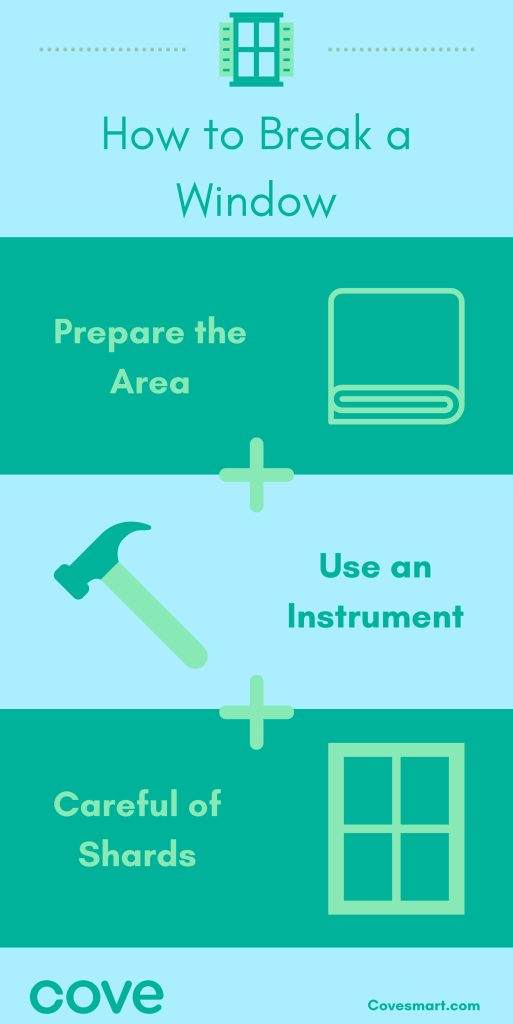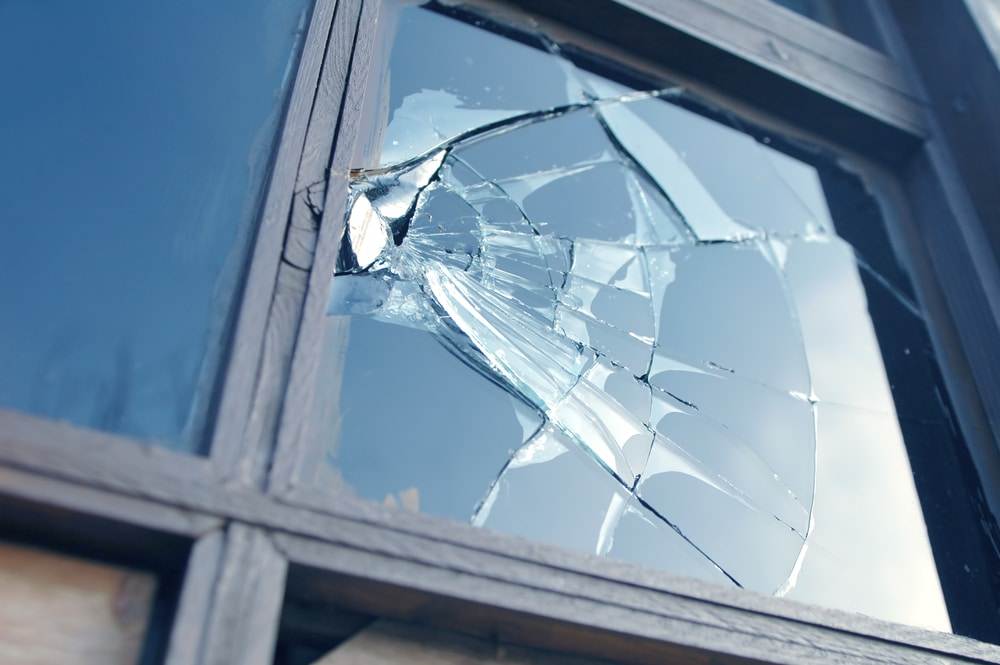Have you ever wondered just how much force it takes to shatter a window? Maybe you accidentally threw a baseball too hard into your neighbor’s window, or perhaps you’ve always been curious about the strength of these fragile-looking glass barriers. In this article, we’ll explore the fascinating world of window-breaking physics and uncover the surprising answer to the age-old question: how many pounds of pressure does it actually take to break a window? Get ready to be amazed!
This image is property of qph.cf2.quoracdn.net.
Factors Affecting Window Breakage
When it comes to window breakage, there are several factors that come into play. The type of glass, window thickness, window frame, temperature, and impact location all contribute to the strength and durability of a window. Understanding these factors can help us better protect our windows and prevent breakage.
Type of Glass
The type of glass used in a window significantly affects its strength and vulnerability to breakage. There are three common types of glass used for windows: annealed glass, tempered glass, and laminated glass.
Annealed Glass
Annealed glass is the most basic and traditional type of glass used in windows. This glass is cooled slowly after being subjected to high temperatures during manufacturing, which results in a more brittle and less resistant material. Annealed glass is more prone to breaking under stress or impact compared to other types of glass.
Tempered Glass
Tempered glass is a stronger and safer option compared to annealed glass. This type of glass undergoes a process called tempering, where it is heated and then rapidly cooled. This process creates internal stresses that give tempered glass its strength. Tempered glass is also known as safety glass because it shatters into small, less dangerous pieces when broken, reducing the risk of injury.
Laminated Glass
Laminated glass is made by sandwiching a layer of plastic or resin between two layers of glass. This creates a highly durable and shatter-resistant material. When laminated glass breaks, the plastic layer helps hold the broken pieces together, preventing them from falling apart. This type of glass is commonly used in situations where safety is a priority, such as in car windshields or buildings located in high-risk areas.
This image is property of qph.cf2.quoracdn.net.
Window Thickness
The thickness of a window also plays a crucial role in its strength and resistance to breakage. Windows can be categorized into three main types based on their thickness: single-pane, double-pane, and triple-pane windows.
Single-Pane Windows
Single-pane windows consist of a single layer of glass without any insulating layers. While these windows are the most affordable option, they offer the least amount of insulation and are more susceptible to breakage. The thinness of single-pane windows makes them less resistant to impact and pressure.
Double-Pane Windows
Double-pane windows, also known as dual-pane or insulating glass windows, consist of two layers of glass separated by an insulating spacer. This spacer is usually filled with air or a special gas to provide additional insulation. The presence of two glass layers makes double-pane windows more resistant to breakage compared to single-pane windows. The insulating layer also helps regulate temperature and reduce noise transmission.
Triple-Pane Windows
Triple-pane windows are the thickest and most durable option among the three. These windows consist of three layers of glass separated by two insulating spacers. The additional insulating layers provide even higher levels of thermal insulation and noise reduction. Triple-pane windows are also more resistant to breakage, making them ideal for areas with extreme weather conditions or high noise levels.
Window Frame
While the glass is a significant factor in window breakage, the window frame also plays a crucial role in the overall strength and durability of the window. Two main aspects to consider when assessing window frames are the material used and the frame’s strength.
Material
Window frames can be made from various materials, including wood, aluminum, vinyl, and fiberglass. Each material has its own strengths and weaknesses in terms of durability and resistance to breakage. For example, wood frames offer natural insulation but are susceptible to rot and warping. Aluminum frames are lightweight but may corrode over time. Vinyl frames are low-maintenance and offer good insulation properties. Fiberglass frames are highly durable and energy-efficient.
Frame Strength
The strength of a window frame is essential as it helps support the glass and withstand external pressures. Frames with reinforced corners and joints provide added strength and stability. A sturdy and well-constructed frame can distribute the forces exerted on the glass more evenly, reducing the risk of breakage.
This image is property of qph.cf2.quoracdn.net.
Temperature
Extreme temperature conditions can also have a significant impact on window breakage. Both extreme cold and extreme heat can weaken the glass and increase the likelihood of breakage.
Effect of Extreme Cold
In extremely cold temperatures, the glass can contract, becoming more brittle and vulnerable to breaking. The rapid change in temperature, especially when combined with moisture, can lead to stress cracks or complete shattering of the glass. Choosing windows with good thermal insulation properties can help mitigate the effects of extreme cold and reduce the risk of breakage.
Effect of Extreme Heat
Extreme heat can cause glass to expand, putting it under significant stress. If the expansion is uneven or exceeds the glass’s capabilities, it can lead to cracks or shattering. High-temperature fluctuations, such as direct exposure to intense sunlight, can also weaken the glass over time. Opting for windows with heat-resistant coatings or tinting can help minimize the impact of extreme heat.
Impact Location
The location of an impact on a window can determine its vulnerability to breakage. Different areas of a window may have variations in glass thickness or structural support, making certain parts more or less prone to breaking.
Center of the Window
The center of the window generally features the thickest part of the glass and is often the most resistant to breakage. This area typically has better support from the window frame and is less prone to cracks or shattering.
Edges and Corners
The edges and corners of a window are more susceptible to breakage due to the lower thickness of the glass in these areas. The stress concentration at these points can lead to cracks or even complete failure if impacted with enough force.
Between Window Panes
For double-pane or triple-pane windows, the space between the glass layers can also be an impact location. If an object or force is applied with enough pressure to this area, it can cause the glass layers to break or shatter. The integrity of the sealing and the quality of the insulating spacer are crucial in preventing breakage between window panes.
This image is property of qph.cf2.quoracdn.net.
Testing Standards
Windows undergo rigorous testing to ensure their strength and resistance to breakage. Several testing standards exist to assess the performance of windows under different conditions and pressures.
ANSI/AAMA/WDMA 101/I.S.2/NAFS-05
This standard is a comprehensive test performed on windows and doors to evaluate their performance in terms of structural integrity, air infiltration, and water penetration resistance. It involves subjecting the windows to various pressure levels and environmental conditions to assess their durability.
ASTM E1300-16a
ASTM E1300-16a is a standard specifically for determining the resistance of windows to uniform static pressure. It provides a methodology for calculating the pressure levels a window can withstand before breaking. This standard takes into account various factors, such as glass thickness, size, aspect ratio, and edge support conditions.
CAN/CGSB-12.20-M88
This Canadian standard outlines the requirements and testing procedures for windows and doors. It covers factors such as thermal performance, air leakage, water penetration resistance, and structural performance.
Methodology of Pressure Measurement
When testing windows, pressure is measured using different units depending on the region and standards used. Some common units of pressure measurement include pounds per square inch (psi), kilopascals (kPa), bars, and newtons per square meter (N/m²). Each unit provides a different scale and numerical value to indicate the force exerted on the window.

This image is property of www.datocms-assets.com.
Common Window Breakage Scenarios
Understanding the common scenarios that can lead to window breakage can help us take preventative measures and protect our windows from damage.
Accidental Impacts
Accidents happen, and sometimes a ball, a flying object, or even a person can accidentally collide with a window. Depending on the force and the area of impact, the window may crack or shatter. To minimize the risk of accidental breakage, it is important to keep potential impactors away from windows, especially in high-traffic areas or homes with children.
Forced Entry Attempts
Windows are often targeted by intruders attempting to gain unauthorized access to a property. The force exerted during forced entry attempts, such as kicking or using tools, can easily break standard windows. Investing in windows with reinforced glass and secure frames can deter potential intruders and increase the security of a building.
Natural Disasters
Natural disasters like hurricanes, tornadoes, or earthquakes can subject windows to extreme forces of wind, debris impact, or even structural collapse. For properties in areas prone to these events, it is essential to install impact-resistant windows designed to withstand high winds and the impact of airborne debris. These windows are constructed with reinforced glass and framing systems to provide increased resistance against the forces generated during such events.
Explosive Shocks
In rare scenarios involving explosions or nearby blasts, the pressure wave generated can cause windows to break. The sudden and intense change in air pressure can exert significant force on windows, resulting in shattered glass and potential injuries. Buildings in areas prone to such events should consider installing blast-resistant windows designed to withstand the pressure and mitigate the risk of breakage.
Professional Window Testing
To ensure the accuracy and reliability of window performance, professional testing is conducted both in laboratories and field settings.
Laboratory Testing
Laboratory testing involves subjecting windows to controlled conditions and simulated scenarios to assess their strength and resistance. Various tests are performed, including impact tests, pressure tests, temperature cycling, and water penetration resistance. These tests help determine the performance of windows and their adherence to specific standards and certifications.
Field Testing
Field testing involves installing windows in real-world environments and exposing them to natural conditions and forces. This type of testing helps assess the long-term durability and performance of windows under actual weather conditions and external impacts. Field testing provides valuable insights into the real-world performance of windows and helps identify any potential weaknesses or areas for improvement.
In conclusion, several factors contribute to the breakage of windows, including the type of glass, window thickness, window frame, temperature, and impact location. Understanding these factors can help us make informed decisions when selecting windows and taking necessary precautions to prevent breakage. By considering the strength and durability of window materials, choosing appropriate window thickness, opting for sturdy frames, and considering the effects of temperature and impact, we can ensure the longevity and security of our windows. Professional window testing further ensures that windows meet industry standards, providing confidence in their performance. Whether it’s accidental impacts, forced entry attempts, natural disasters, or explosive shocks, being aware of potential scenarios allows us to choose the right windows and take proactive measures to protect our homes and buildings effectively.
